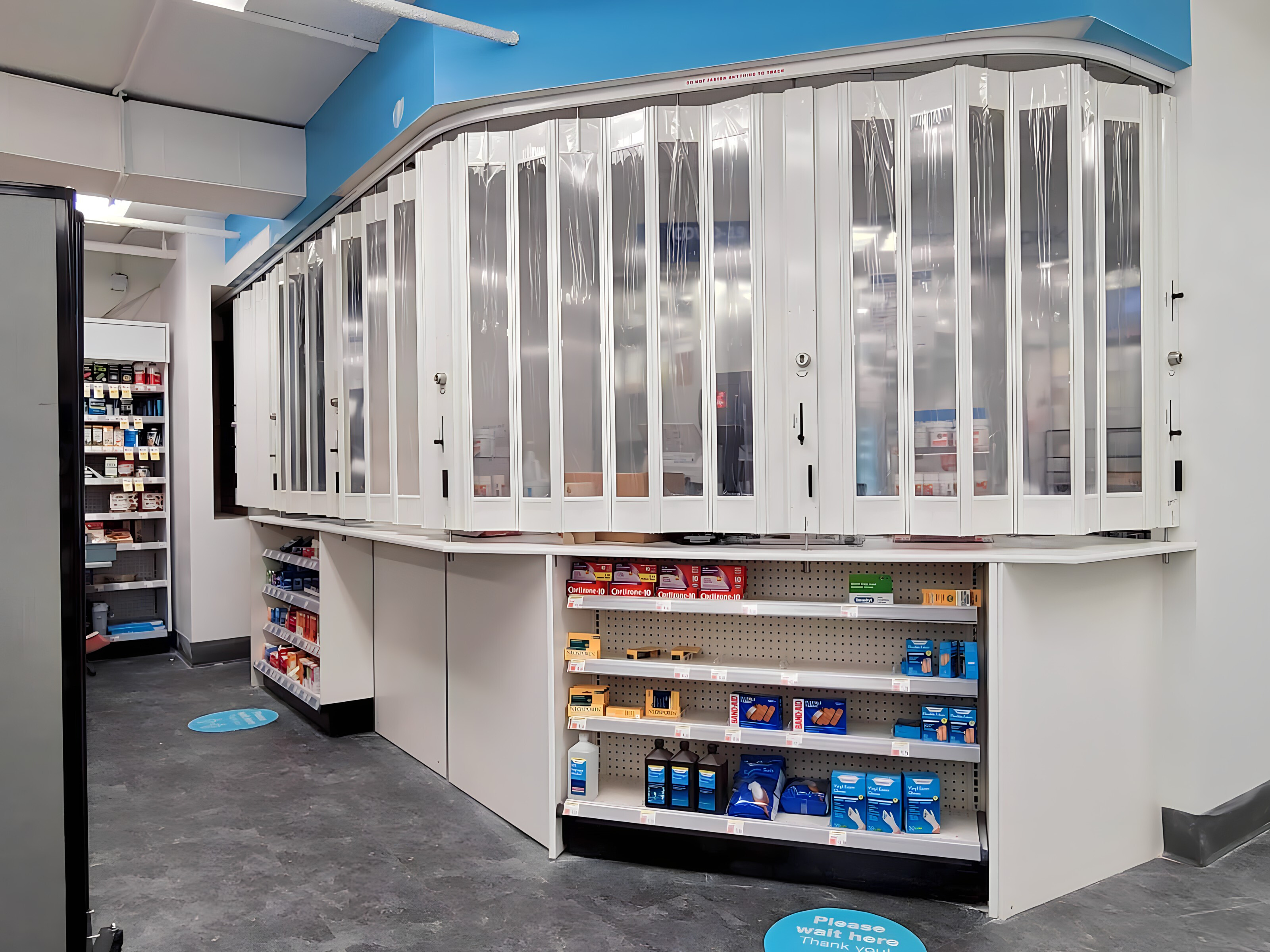It’s no secret that pharmacies are prime targets for criminals due to the valuable, in-demand medications and prescription drugs that they stock.
From after-hours burglaries to brazen daytime robberies, pharmaceutical theft can occur at any time, making it crucial for pharmacies to take a multi-layered approach to their security.
How Serious a Concern Is Pharmacy Security?
Thieves often target pharmacies for opioids, stimulants, and other controlled substances that are highly sought after for illegal distribution and personal use.
Unlike hospitals or other large healthcare facilities, retail pharmacies often have less security, making them easier to break into or rob. Underprotected pharmacies are also at risk of becoming repeat targets for theft — criminals who successfully steal from one pharmacy may target it again, knowing its vulnerabilities.
While many pharmacy break-ins happen at night when the store is closed and less protected, there’s also a high risk of armed robbery and smash-and-grab theft during business hours.
Because of all these threats, it’s becoming increasingly important for pharmacies to invest in security measures like reinforced glass, advanced surveillance systems, controlled access to medication storage areas, and even time-delay safes for opioids to deter criminals.
Strong pharmacy security requires an approach that combines multiple measures, including physical barriers, modern technology, and other best practices.
Increasing Pharmacy Security by Securing the Physical Environment
Physical security measures are the first line of defense for pharmacies. By implementing robust physical security upgrades, pharmacies can protect against a range of different theft types, safeguarding pharmaceutical products and employees alike.
One of the most effective ways to boost pharmacy security is by reinforcing entry points and product display areas with physical barriers.
Side-folding grilles, security shutters, reinforced glass, and secure display cases can help deter break-ins and smash-and-grab thefts while still allowing pharmacies to maintain an inviting storefront during business hours.
Security shutters, in particular, provide a strong physical barrier against forced entry and burglary.
For instance, XL commercial security shutters are ideal for pharmacies with large indoor openings, including wide entryways and customer service countertops. These shutters can be easily installed below any ceiling and locked into place over openings up to 30 feet wide, providing robust after-hours security for pharmacies.
As an alternative to shutters, side-folding grilles are available in both polycarbonate and perforated steel varieties, allowing for greater visibility.
In addition to shutters and grilles, reinforced display cases or aluminum security cases can prevent smash-and-grab thefts by making it significantly harder for criminals to access medications and high-value items.
When combined with access-controlled storage for controlled substances, these physical security upgrades can greatly reduce the risk of both after-hours break-ins and daytime thefts.
What Other Pharmacy Security Measures Are Required?
Physical security measures are just the first step towards securing pharmacies. To fully safeguard a pharmacy against a full range of security threats, physical measures must be complemented by other proactive strategies.
Surveillance and Access Control
Beyond physical barriers, pharmacies should also implement advanced surveillance and access control systems.
High-resolution security cameras positioned at entry points, transaction counters, and storage areas can help deter criminals and provide valuable evidence in the event of a crime. Modern surveillance systems equipped with motion detection and remote monitoring allow pharmacy owners and security teams to respond to threats in real time.
Restricting entry to stockrooms and limiting access to controlled substances through keycard or biometric authentication ensures that only authorized personnel can handle high-risk medications. This helps pharmacies prevent theft and maintain compliance with regulatory requirements related to the handling and securing of controlled substances.
Time-Delay Safes and Inventory Management Strategies
Time-delay safes have become a widely adopted security measure in pharmacies, particularly for storing opioids and other controlled substances. These safes require a programmed delay before opening, discouraging would-be robbers who seek quick access to valuable drugs.
Many criminals avoid targeting pharmacies that use time-delay safes because the extra time increases their risk of being caught.
Additionally, effective inventory management is essential for pharmacy security, especially because not all theft comes from external sources.
Pharmacies should minimize on-site stockpiles of high-theft medications, track inventory with real-time monitoring software, and regularly audit controlled substances to identify any discrepancies that could indicate internal theft or fraud.
Staff Training and Emergency Preparedness
Security measures are only as effective as the people who use them.
Staff training plays a crucial role in pharmacy security, ensuring that employees know how to use barriers like security shutters, handle suspicious behavior, de-escalate potentially dangerous situations, and follow emergency procedures in the event of a robbery.
Training should cover how to safely comply with a robber’s demands during an armed robbery to minimize the risk of harm to employees and customers.
Pharmacies should also implement clear protocols for handling prescription fraud, identifying counterfeit prescriptions, and responding to theft attempts.
Community Engagement and Law Enforcement Partnerships
Pharmacies can further improve their security by building relationships with local law enforcement and participating in community crime prevention initiatives.
Collaborating with police on crime trends, reporting suspicious activity, and implementing law enforcement-recommended pharmacy security measures can deter criminal activity.
Additionally, joining local business watch programs and engaging with the community can help pharmacies foster a network of awareness and support. Criminals are less likely to target businesses that are visibly engaged in crime prevention efforts.
Final Thoughts on the Importance of Layered Security for Pharmacies
No single security measure is enough to fully protect a pharmacy from theft. Instead, pharmacies must take a layered approach that integrates physical security, technology, and policies.
By prioritizing multi-layered security, pharmacies aren’t just protecting their business and employees — they’re also helping prevent the illegal distribution of prescription medications, contributing to overall community safety.
At QMi Security Innovations, we offer a range of security barriers for pharmacies, from clear shutters and security cases to high-security exit doors. We work with dealers all over the country to help secure pharmacies, protecting their people and property.
Contact us today for a consultation.

